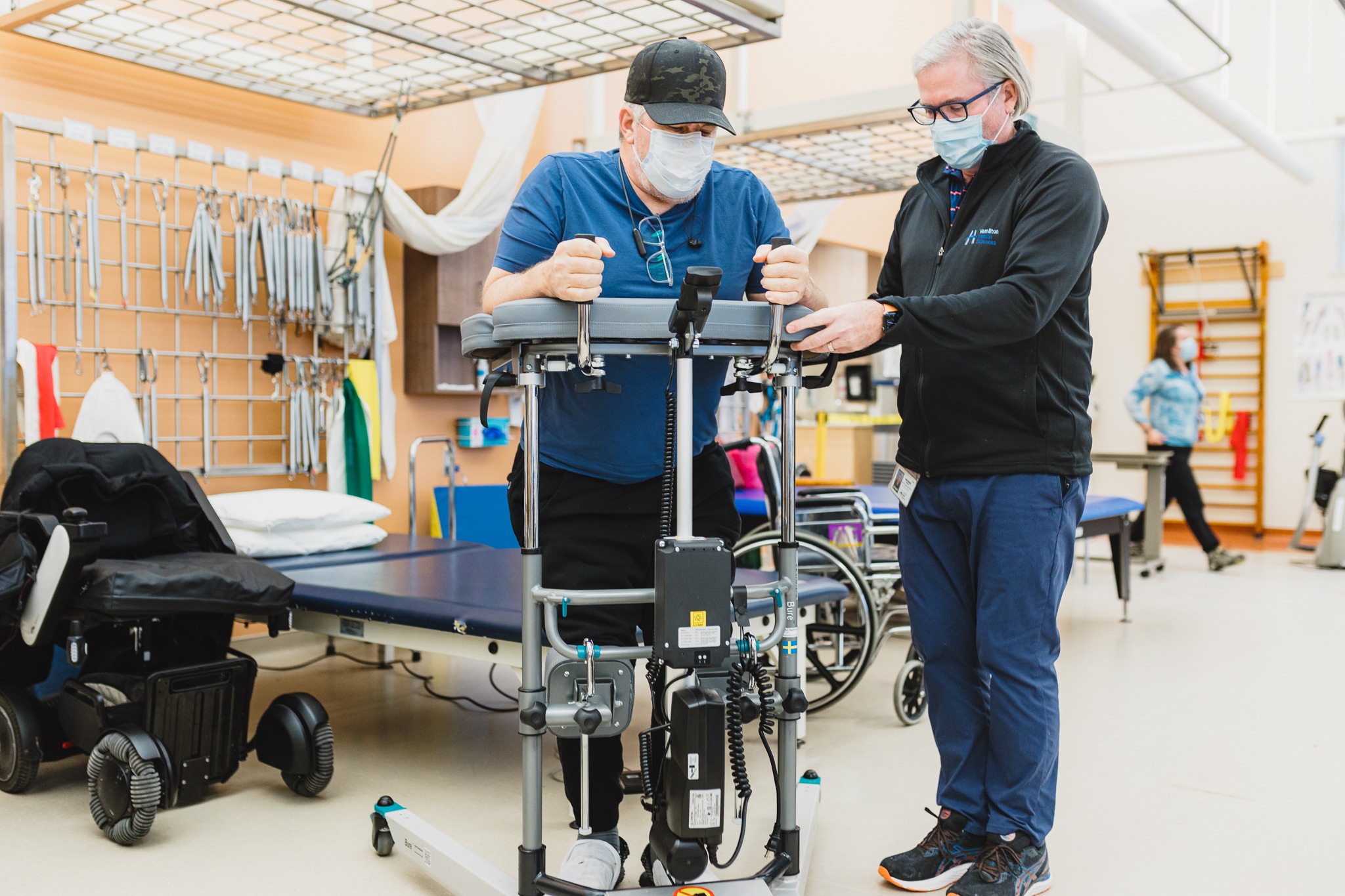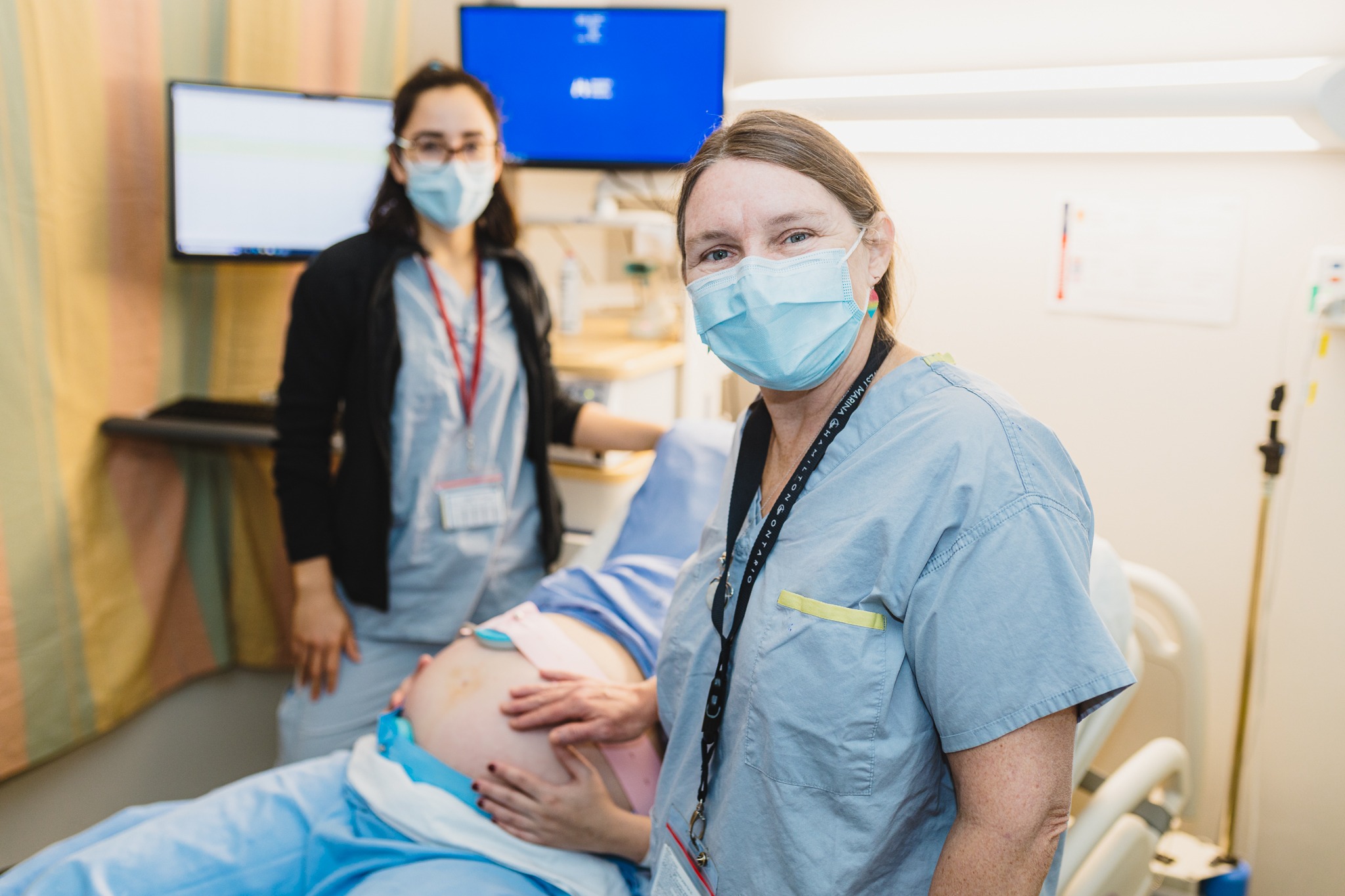
Shy veins can’t hide from Vein Viewer Flex
Make a purchase, make a difference
The Hamilton Health Sciences Volunteer Association (HHSVA) is a non-profit organization that supports patient care at Hamilton Health Sciences (HHS) through the operation of cafes, cafeterias, gift shops and hospital parking. All profits generated are donated to enhance patient care across our family of hospitals. This includes purchasing new, state-of-the art equipment like the Vein Viewer Flex so our teams can deliver the very best patient care.
“Glowing” reviews for Vein Viewer Flex
Locating hard-to-find veins in order to draw blood or insert an IV (intravenous) line can be like searching for a needle in a haystack, with several pokes before finally tapping into a vein.
Multiple attempts can be painful and frustrating for patients, as well as time consuming and stressful for health-care professionals.

The Vein Viewer Flex illuminates veins under the skin, making them easy to find.
But a new piece of equipment called a Vein Viewer Flex makes it quick and easy to draw blood or insert an IV into the trickiest vein, in just one attempt.
The Intensive Care Unit (ICU) at HHS’ Juravinski Hospital and Cancer Centre (JHCC) purchased a Vein Viewer this year, with a donation of just over $10,000 from the HHSVA.
Funding was part of a record $1.2 million in donations from the HHSVA to HHS hospital sites this year for capital equipment purchases, with a focus on bringing in new technology, like the Vein Viewer, and upgrading operating room equipment.
Reasons for hard-to-find veins can vary.
Some people naturally have small, thin veins, making them difficult to see. Dark skin tones can make veins hard to find. And ICU patients can have swelling that makes it challenging to locate their veins.
Vein Viewer technology uses infrared light to illuminate patients’ veins under the skin so they appear a glowing, electric green colour. This makes it much easier to see the veins, so a needle can be inserted in just one attempt.
“We’re grateful to the HHSVA for this support,” says Jennifer Fife, the ICU’s clinical manager. “Our Vein Viewer not only makes inserting IVs more efficient for our nurses. It also means less pain and stress for our patients.”
The other Vein Viewer at HHS is also at JHCC, where it’s part of a trial with the Vascular Access Team. This team’s work includes inserting difficult IV and PICC (peripherally inserted central catheter) lines in cancer patients with difficult-to-locate veins.
How it’s used
The Vein Viewer is for patients needing peripheral IVs, where the needle is inserted into a small vein in their arm or hand.

Matt Scaum is a registered nurse with Juravinski Hospital and Cancer Centre’s ICU.
It’s not used for central IVs, which are larger and more complex. Central lines are placed in a large vein in neck, upper chest or groin by a physician and used for longer-term therapy. It’s common for ICU patients to have central lines, and transition to peripheral lines as they recover.
Whenever possible, the ICU prefers to use peripheral lines because they’re less invasive with less risk of infection, says Matt Scaum, a registered nurse with JHCC’s ICU.
“We’re sometimes asked to bring the Vein Viewer to various wards, to help locate hard-to-find veins when the team specializing in IVs isn’t available,” adds Scaum.
The Vein Viewer is simple to learn and easy to use. “It takes just a few minutes to learn this technology, making it easily accessible to our entire team of ICU nurses,” says Fife.
That differs from other image-guided procedures at HHS, which require specialized training.
Supporting HHSVA

Tracy Rivers, executive director, Hamilton Health Sciences Volunteer Association.
This year’s $1.2 million in donations from the HHS Volunteer Association for capital equipment purchases also included surgical and perioperative instruments, monitoring devices, and pediatric stretchers and cribs, all of which help HHS teams provide expert care for patients.
“While government funding supports hospital operating costs, salaries and capital project contributions, it doesn’t cover equipment purchases,” says Tracy Rivers, the HHSVA’s executive director.
“That’s why fundraising is so vital for hospitals. We’re grateful to our staff, physicians, patients and visitors who make purchases at our cafes, cafeterias and Give (gift) shops, since proceeds allow the HHSVA to support a wide range of hospital services, programs and equipment purchases, such as the Vein Viewer, and staff educational opportunities.”



